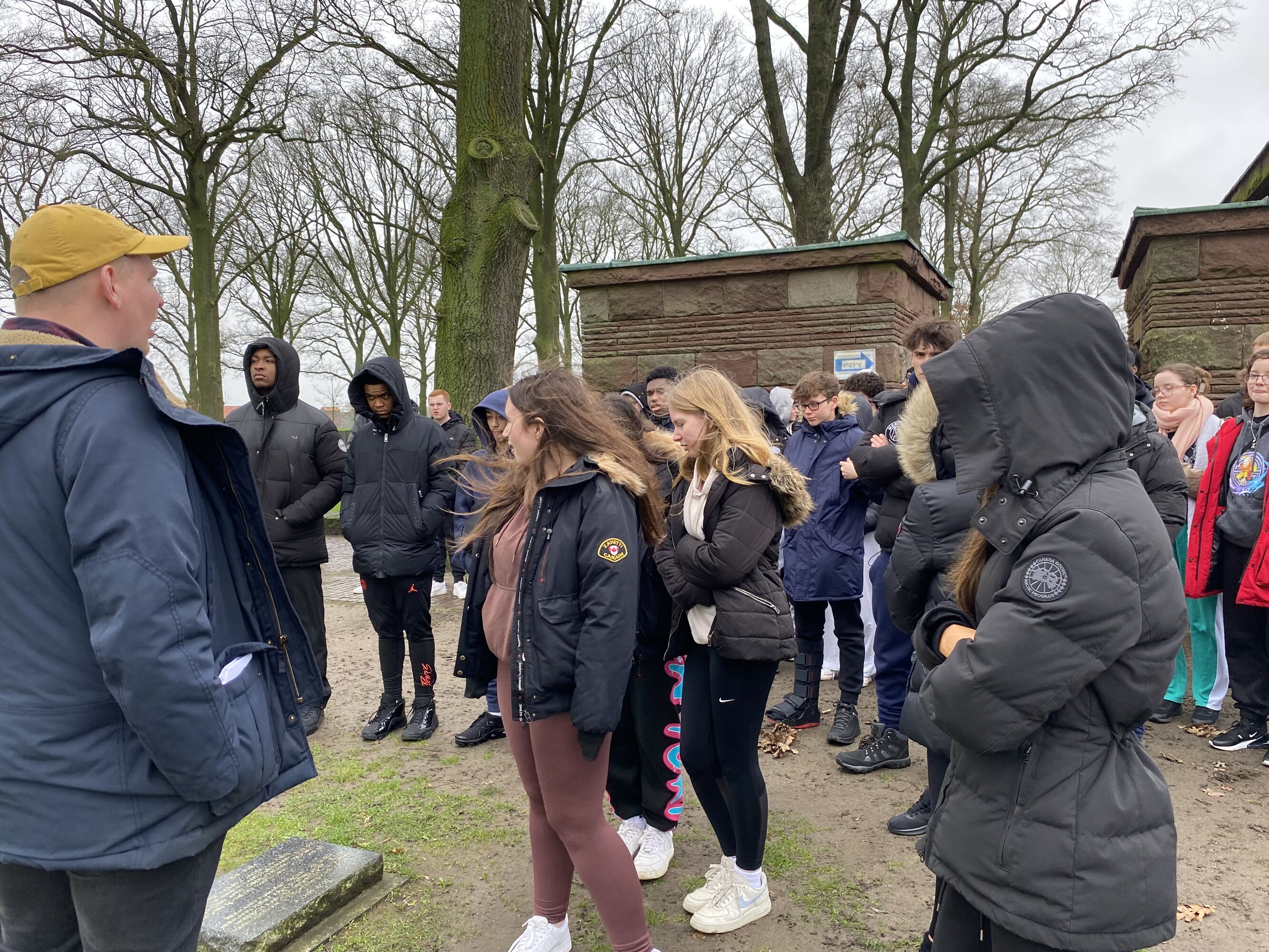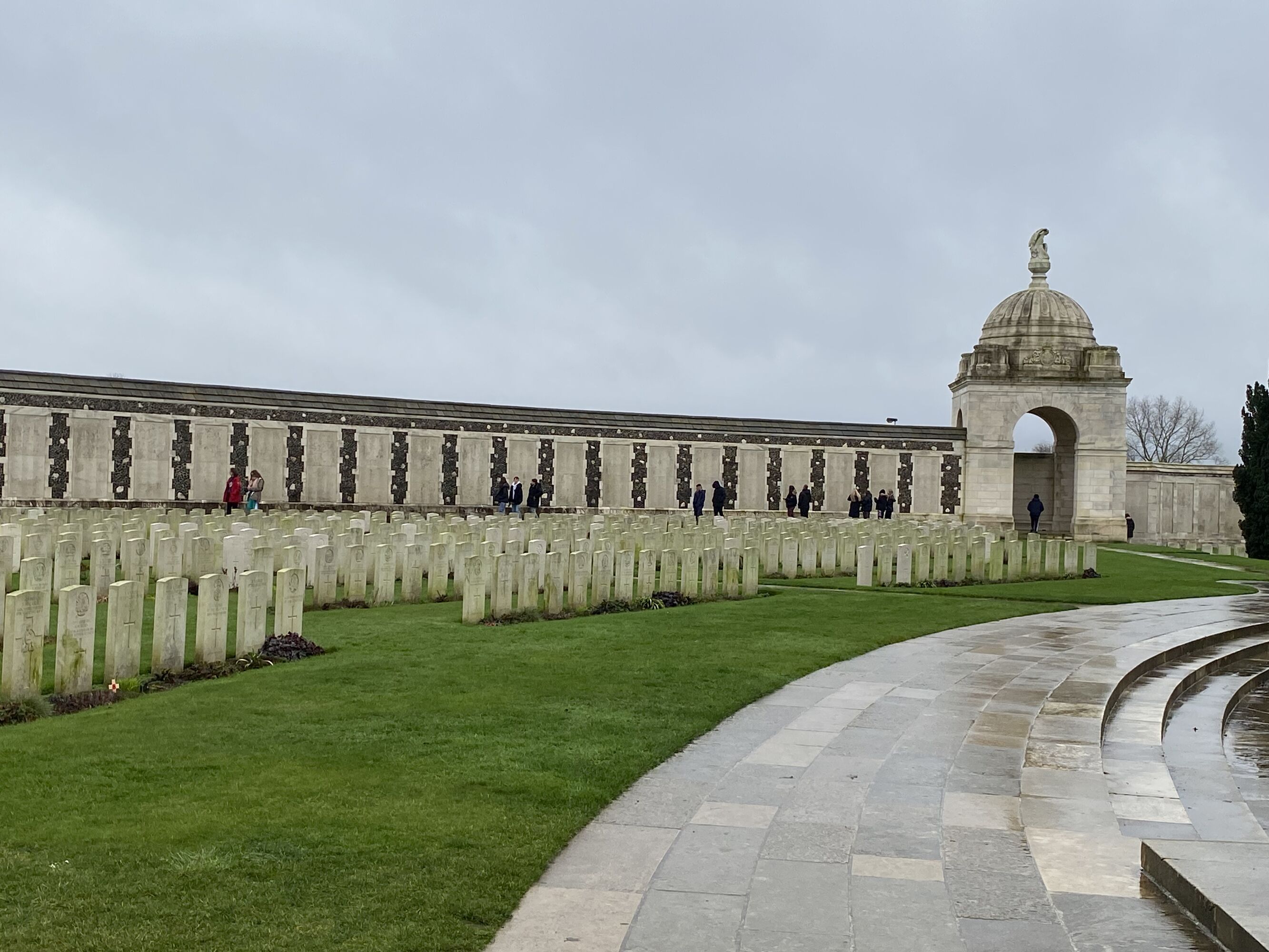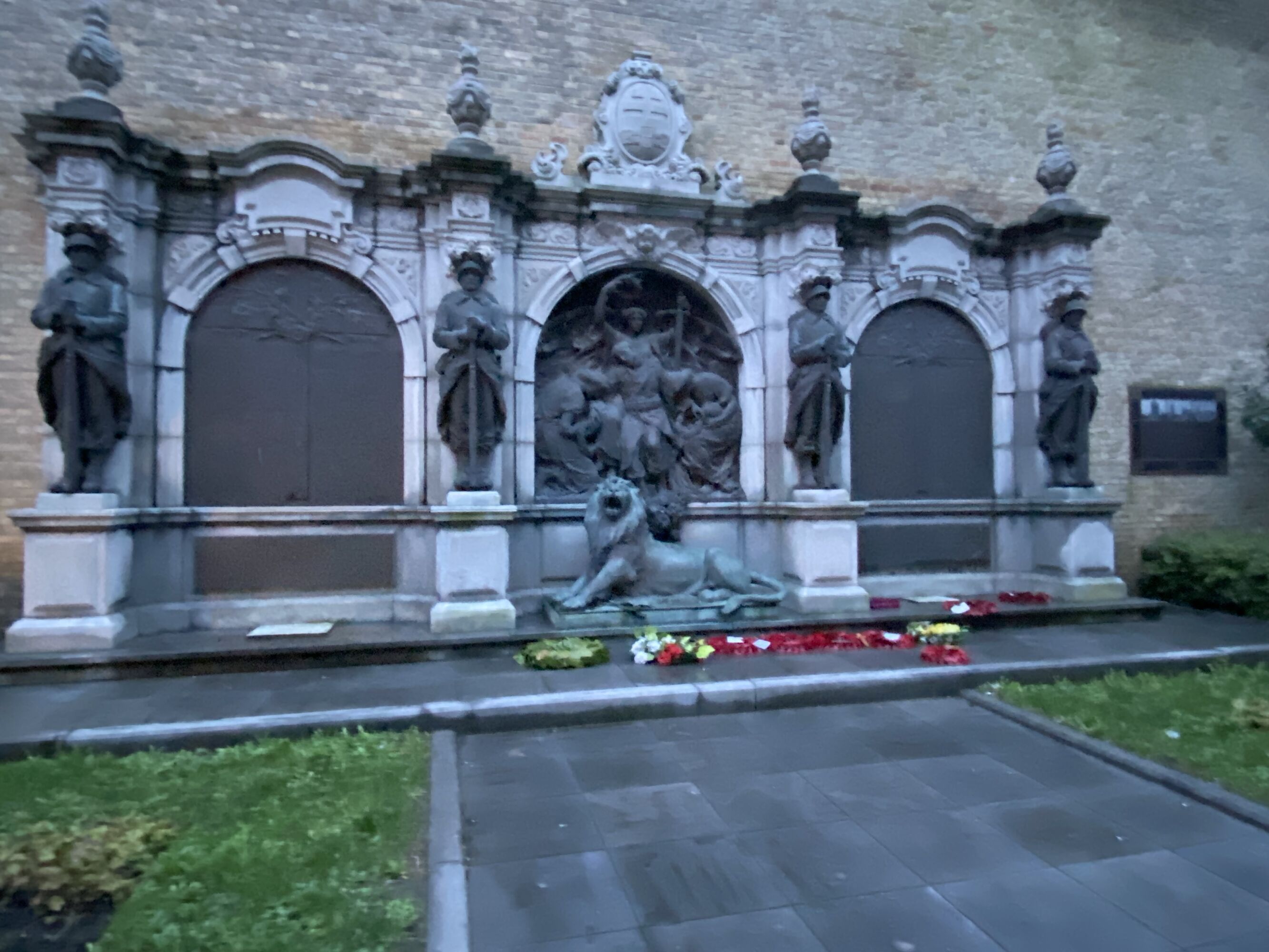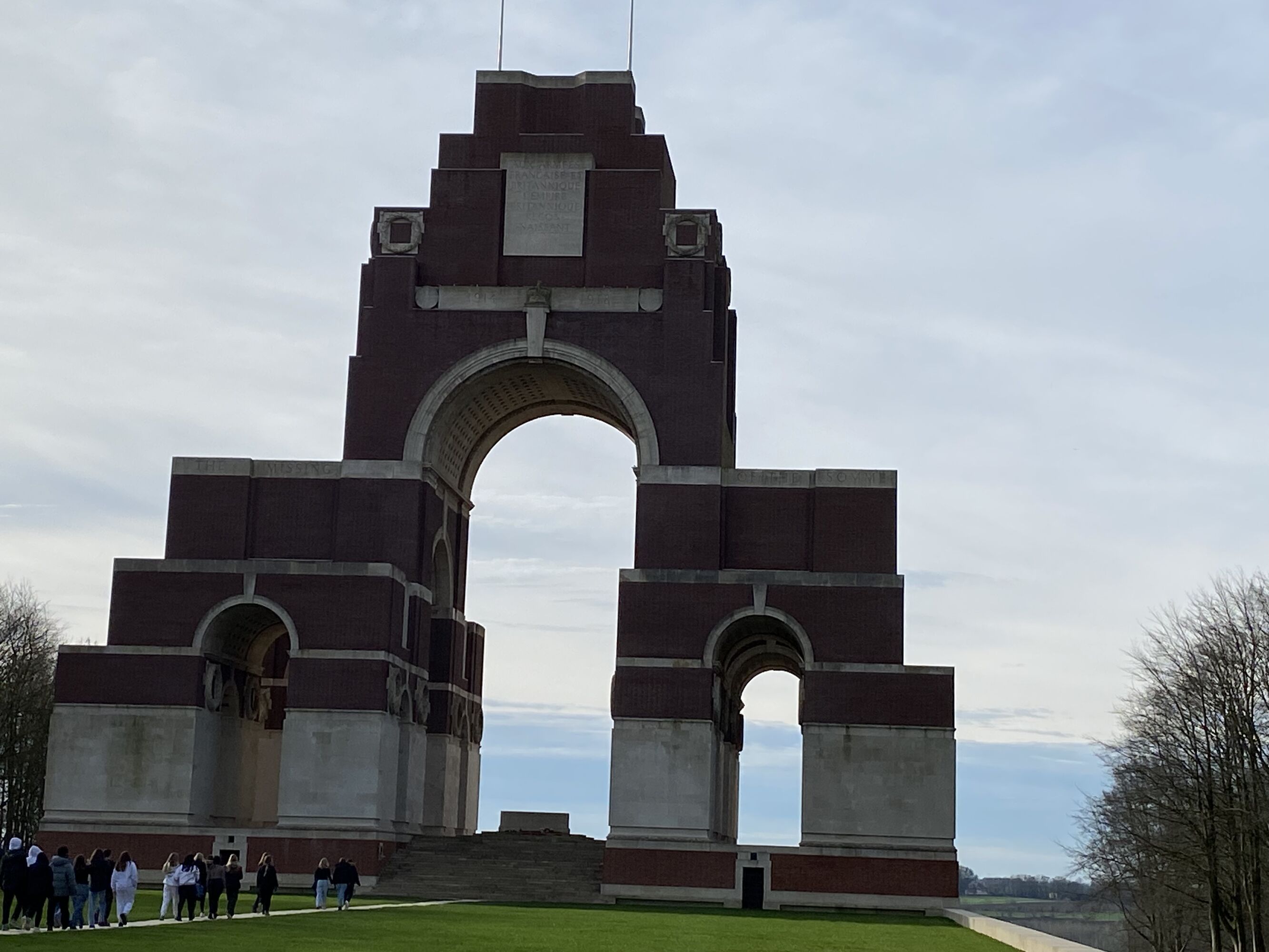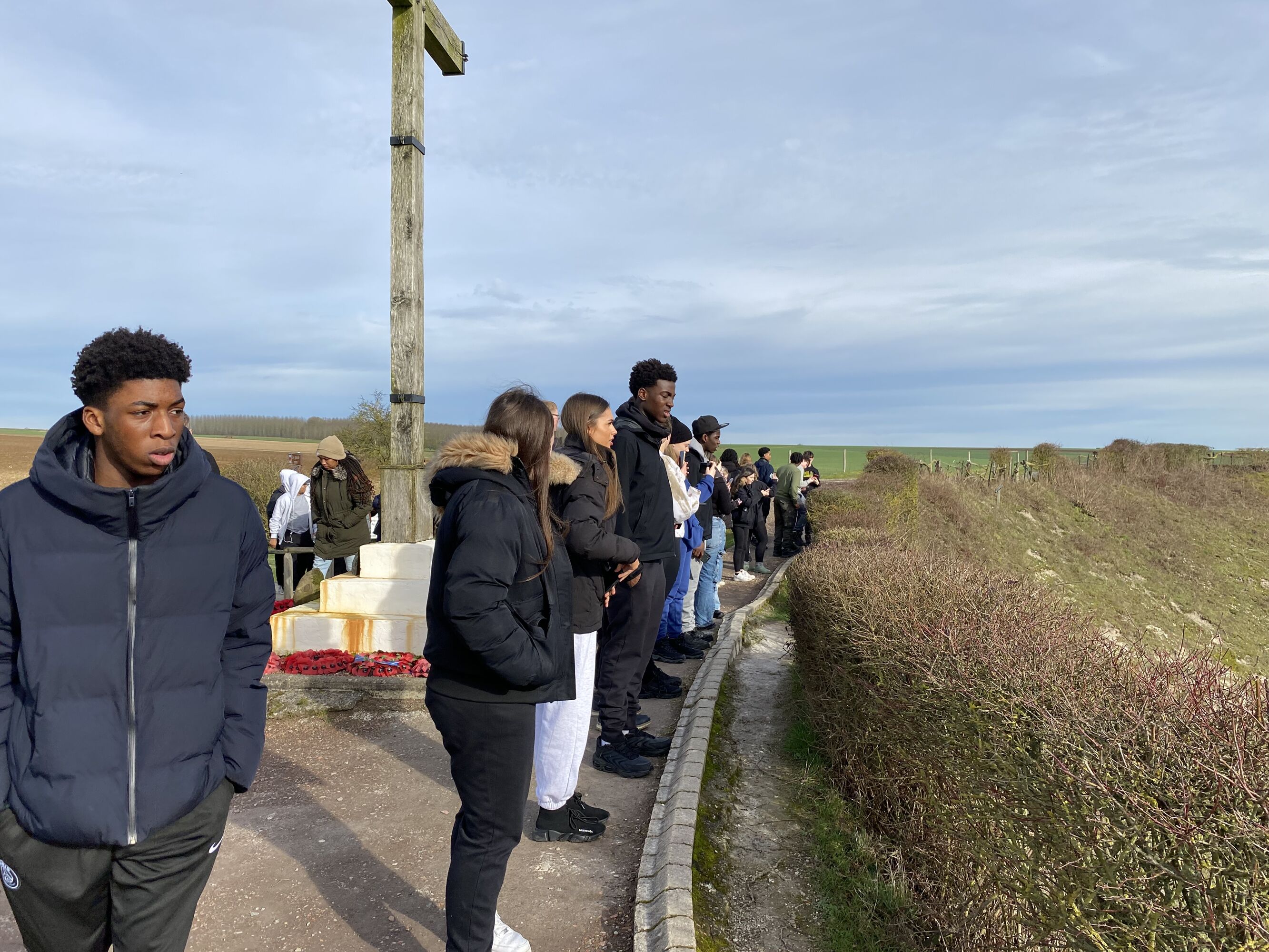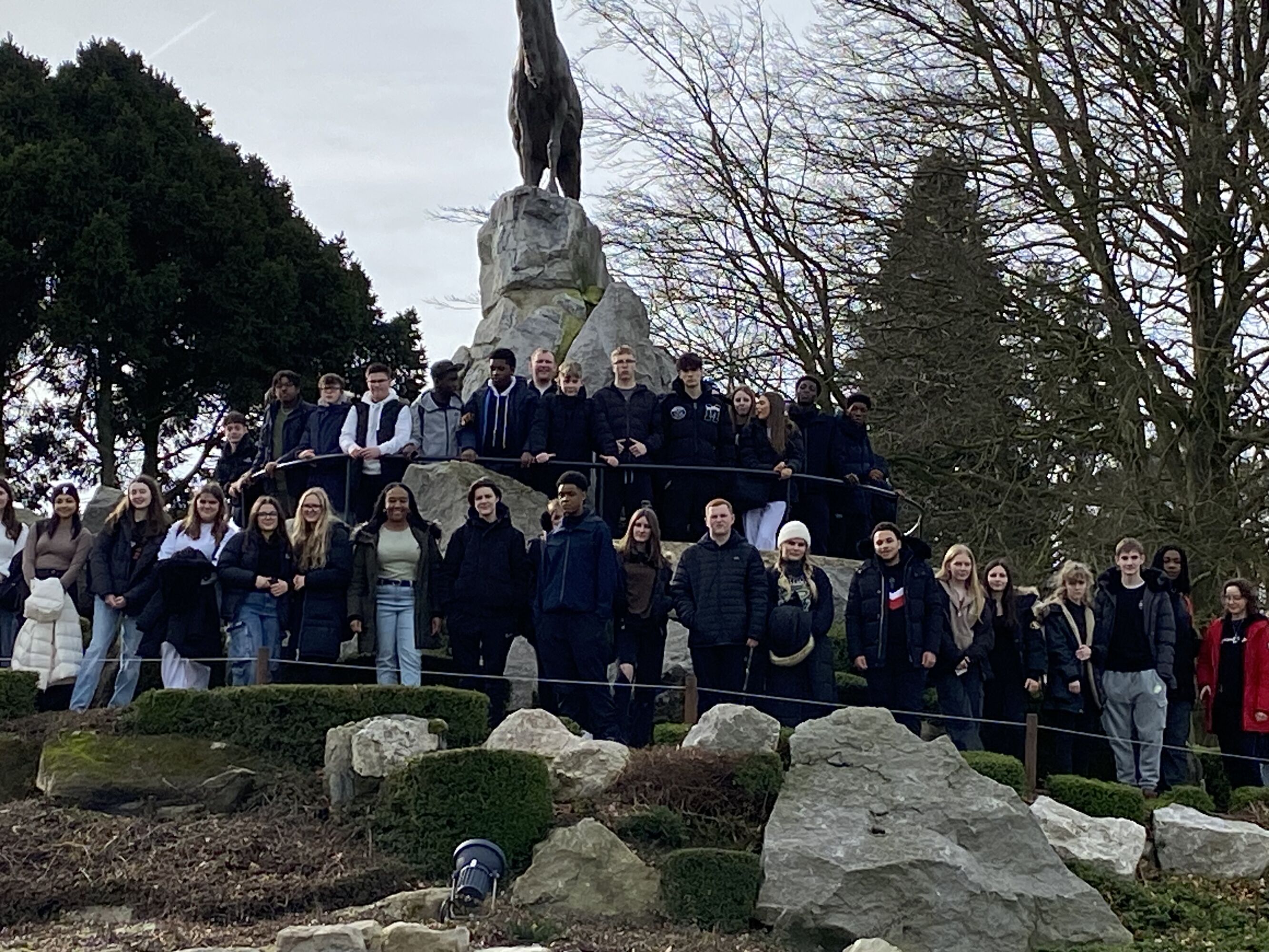News
YEAR TEN AND ELEVEN BATTLEFIELDS TRIP BELGIUM AND FRANCE 2024
Back
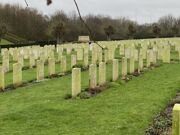 The year ten and eleven battlefields trip was nothing short of an incredible experience. This helped deepen the understanding we have with World War One and the bravery of the soldiers who fought and died.
The year ten and eleven battlefields trip was nothing short of an incredible experience. This helped deepen the understanding we have with World War One and the bravery of the soldiers who fought and died.
Although an early start to the trip, the excitement each student had to venture abroad and learn was radiating. The travel was, as expected, an adequate length, but with an experienced bus driver educated in the surrounding France and Belgium and insightful summaries of each place we were going to before we arrived, the coach journeys throughout the trip seemed to fly by.
We first visited Tyne Cot Cemetery, a sombre memorial ground unabridged with rows upon rows of kempt, white graves. After a short discussion we had a wander round which emphasised just how many lives were lost, before gathering for an evaluation of our thoughts on the cemetery.
Prior to entering Ypres, we then visited two more cemeteries, one being a German cemetery which was thoroughly insightful as we contrasted conditions in upkeep and the latter being the resting place of the youngest known soldier to fight and die in battle. The last grave definitely carried quite an impact as him being the same age as the majority of students there conveyed just how young the people who fought were and how devastating it’s effects had been.
By mid afternoon we made it to Ypres centre and walked to Ypres Museum. Decadent in artefacts and statistics, it was difficult not to be enticed by the museum and resulted in us students staying for a while, just desperate to read and study the fragments of the War they owned, including propaganda toys and posters, maps which depicted fight routes and even artwork made in commemoration of the War.
Later on in the day we went to Leonidas chocolate shop, a bright, welcoming business which acted as a nice break in comparison to the more emotional places we had visited. The chocolate was rich and moorish; given to us at an exceptionally good rate for authentic Belgian chocolate.
In the late evening, we went to a ceremony held everyday, commemorating the soldiers who fought in the war, held outside a large structure designed with images and statistics. We witnessed first hand rows of soldiers stand to attention and trumpets play the familiar memorial tune whilst we stood in silence. It was a beautiful ceremony and one I’m fairly certain will not be forgotten for a decently long time.
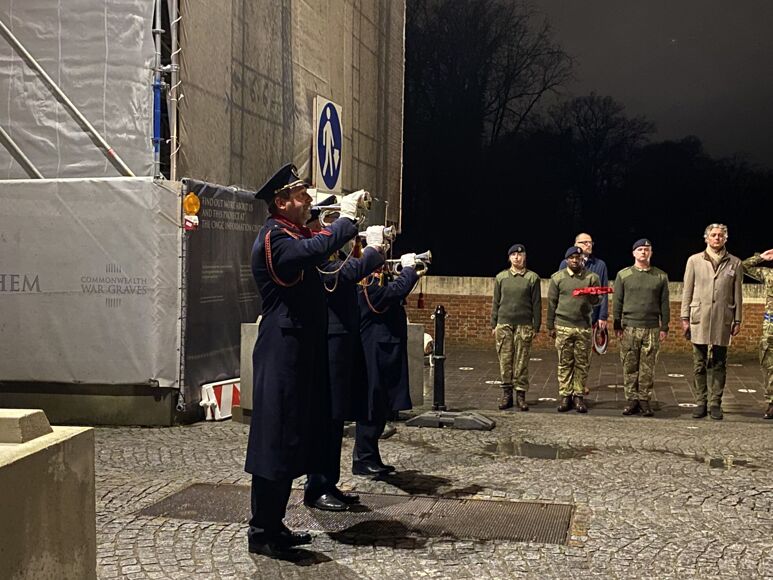
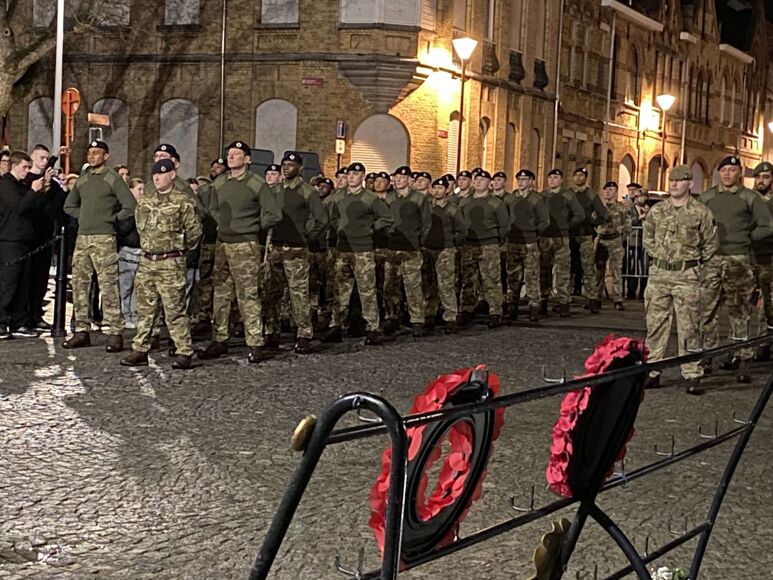
Everyone we spoke to was extremely friendly and willing to help and speak to us, including the staff at The Poppies Hostel, our lodging for our stay. The hostel was lovely, clean and welcoming, including a recreation room which was utilised in the evenings and spacious rooms which acted as the perfect end to our days. They also supplied us with a buffet breakfast each of the two mornings, including continental food; eggs, bacon, and sausage along with cartons of drinks and free unlimited water. Over and above that, they also supplied us with lunch-including a baguette (which we chose our fillings for and made ourselves), an apple and a sweet-treat.
On day two, we began by travelling back into France to pay a visit to the grave of Wilfred Owen - known for War poems whilst serving himself in The British Army’s air rifle regiment. As a group, we listened as one of our group, Livvie Sykes, read Owen's poem Exposure - imaging what it would be like to suffer such grave conditions whilst- in fact- standing only metres away from where soldiers would have fought.
Bidding goodbye, our next stop was Beaumont-Hamel Newfoundland Memorial. This place is composed of well preserved trenches and a battlefield, bursting with wildlife and greenery now, but once packed with soldiers fighting some of the most horrific battles ever fought. One impactful area of this was the walk we took, counting 183 steps between both sides’ fronts- creating the harrowing idea that the soldiers really weren’t too far apart when fighting at all.
We made a penultimate stop at the Lochnager crater, conjured after a mine explosion and then bombings which created a steep hollow deep almost mesmerising to us. Ultimately however, we visited the Thepival memorial which names the 72000 missing British and South African soldiers from the Battle of the Somme. This, for me, was the most memorable of all the places as you could see the impact it was having on everyone, staring at the multitude of names on the wall never found. That was really emphasising what the trip was about and gave all the students a deeper understanding of the harshest effects of the war.
All wishing we could never leave, on the third morning we packed up our stuff and departed from the hostel. This day was more short lived, as we were hopeful to catch the earlier ferry so as to not run into too much traffic. We first visited the Passchendaele Memorial Museum which contained preserved trenches and artefacts from the Third Battle of Ypres. There was a cinema room with an explanatory clarification of the battle and its effects. Going into the bunkers and trenches, we were lucky enough to explore and experience first hand just what the trenches were like for people to spend years in. There were also disparate shelters which we went into and tried to empathise with the people who may have once been in here hiding from a possible threat. The grounds of this museum and trench exhibition were also stunning and preserved well enough that we could have a stroll of the forest paths alongside the museum.
Finally, we visited A real life safe house of the Great War- known as Talbot House. This was a property used by soldiers almost as a social house, where there would be different performances and soldiers could come, relax, regardless of their rank. The owners still try to mimic that same idea today by allowing us all tea and benches to sit at for lunch, as a way to allow us to feel how they might have felt as we enjoyed each other's company on our last day abroad. The most interesting part of the house however, was ‘The Upper Room’. Once a loft, this was converted during the Great War to a chapel and when you step into the room, you can almost feel the multitude of soldiers that once came there for a haven to pray and escape the hardships they were facing. The guide was lovely and highly informative and engaging, teaching us a lot about the outside lives of soldiers when they weren’t fighting.
Ultimately, we ended up on the ferry home; arriving late evening.
This trip was honestly a once in a lifetime experience for not only myself and the students but for all of the teachers too. Friendships were made, new places and experiences got to be explored and everyone thoroughly deepened their knowledge and connections with World War One and the struggles of the soldiers. I highly encourage anyone in the future to go if given the opportunity as not only did it broaden my grasp on The Great War but over the three days, I truly connected with my peers in a new light and candidly enjoyed every moment.
Laurena Anderson, 10Y
